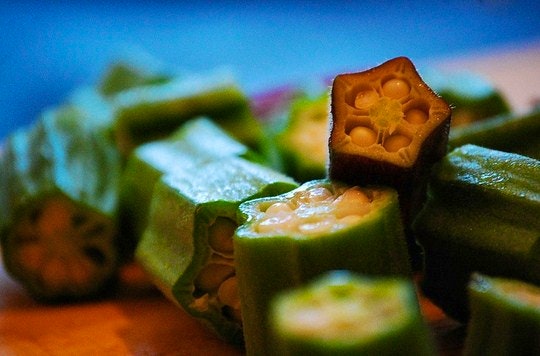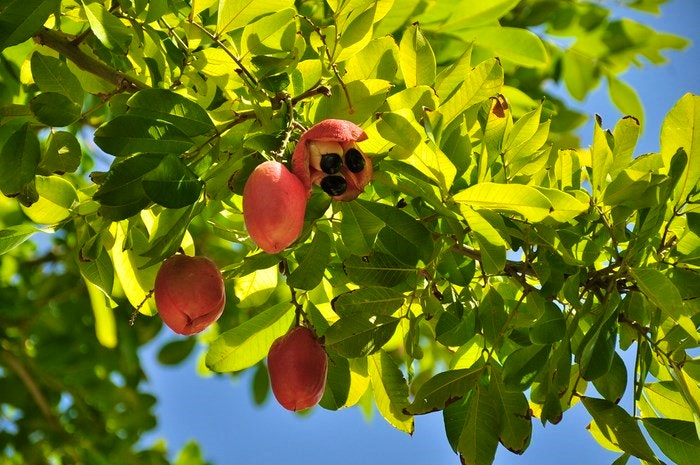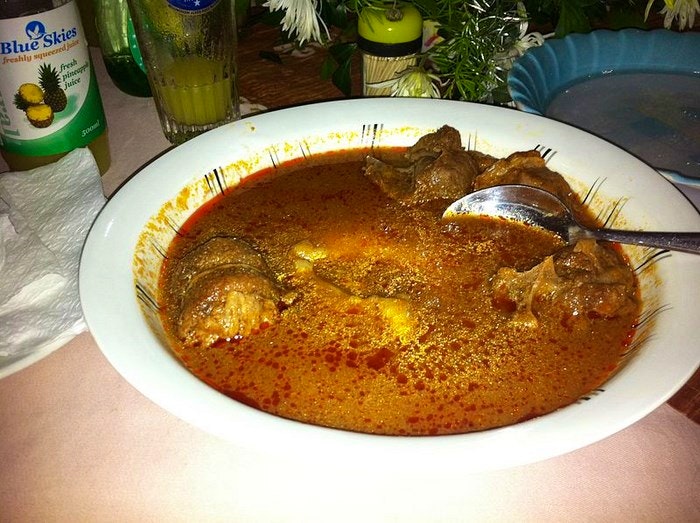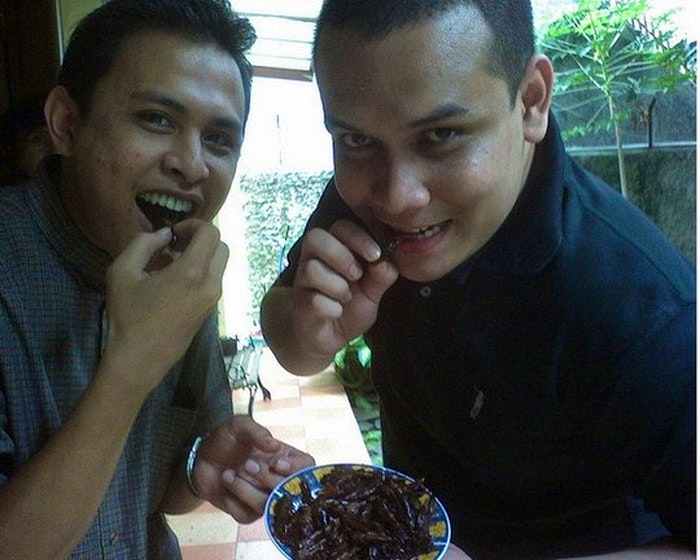Would you ever be tempted to enjoy a nice side of bullfrog with your veggies like the Namibians do? How about a tender giant worm from Botswana? Not your thing? Not a problem, have a swig out of the calabash to wash away the foreign tastes with some fresh, warm blood like the Masai warriors in Tanzania.
Various cultures around the world have traditional foods that most Westeners would never dare try, unless they felt obliged to. As the saying goes, one man’s junk is another man’s treasure.
1. Mopane Worm – South Africa, Zimbabwe, Botswana
The Mopane Worm, also known as Imbrassia belina, was covered in a previous blog post, but it’s on this list as well. It’s definitely tasty, and though it’s not your normal restaurant cuisine, it’s a staple food for many people in Africa. These little worms can grow quite large given a chance, which they rarely are nowadays.
They are plucked from trees and bushes, given a squeeze to get rid of the guts, before being boiled up with ingredients such as garlic and tomatoes, or given a quick fry-up and are then eaten straight out the pot or pan. When cooked right, they’re said to taste just like chicken, but I’ll let you be the judge of that.
2. Tera Sega (raw meat) – Ethiopia
If you’re going to try raw meat while in Ethiopia, but can’t imagine slurping down a still-warm chunk, we’d suggest you enjoy a local dish called Kifo. This dish can be prepared in several ways, but the most popular options are to have it either mitimta (raw beef marinated in spices) or kebbeh (raw beef rolled in a spicy chilli powder and butter). Having the meat lebleb (warmed) is also an option.
Why not just cook the meat? In the past warriors would kill and then eat an animal, rather than spend time labouring to make a camp fire to cook it over, as the chances of enemy soldiers spotting the smoke were quite high. If you’ve never tried this dish before make certain you bring de-worming tablets as this food choice, while high in vitamin B and potassium, can also lead to tape worms.
3. Ackee plant – West Africa
A traditional fare in West Africa and Jamaica, the Ackee plant was exported from Africa in the mid-17th century, and is still enjoyed today by those who live in Carribbean. It often replaces eggs at breakfast and is delicious served with fried onions and tomatoes. Another name for the Ackee plant is ‘Vegetable Brain’, and although it’s yellow it looks surprisingly like the grey matter in our skulls.
If you’re willing to try it, make sure you do so when it’s properly matured, as immature fruit is toxic due to a compound in it called hypoglycin A. In large quantities, the unripe fruit causes hypoglycemia, basically stopping the liver from processing glucose … which can cause permanent neurological damage or even death! When it is ready for consumption, it splits open on its own and shows three-four large black seeds. It is high in vitamin A, zinc, essential fatty acids, and protein.
4. Giant bullfrog – Namibia
For the French, the lower half of a frog is a delicacy. In Namibia, they don’t stop at just the legs, thigh, and feet, they eat the whole thing! But be warned, if incorrectly prepared or taken before it is mature/ croaking, you could be stricken with kidney failure, known locally as Oshiketakata, due to the poison in the frog.
There are different ways of cooking it to neutralize the poison. People in the Oshakati/Ongwediva region line the inside of their cooking pots with wood from the Omuhongo tree; while those in the Okambebe/Oshikango region use wood from the Omuva and Oshipeke trees.
5. Chitoum – West Africa, Ivory Coast
If you’re grossed out by Mompane worms, you probably won’t like this little beetle one bit. Served chiefly along the West Coast of Africa, this dark-coloured bug is eaten dry as a crunchy snack. The bugs are caught and have their innards squeezed out before being baked or fried until they are crispy.
6. Fufu / Ugali / Pap – Central, Western, and Eastern Africa
Fufu is a staple food in central and western Africa, originating from Ghana. Starchy vegetables such as yams or cassava are pounded down and added to plantains before being boiled and then pounded again until they form a doughy ball.
It is then traditionally eaten on the side of a soup or sauce, much like the Western World which uses bread in its various forms (garlic, pita, whole-wheat, etc). A similar food called Ugali is eaten in Southern and Eastern Africa and is made from masa (corn flour). This is known as pap in Southern Africa.
7. Blood – Tanzania and Kenya
A meal of milk and honey sounds much like the fabled ambrosia which is popular in myths involving Greek gods. An African equivalent may be found in the diet of the Maasai tribe, who live on milk, pap, meat, and blood. Yes, you read that right, a staple part of their diet comes from drinking fresh, warm blood from their cattle.
The cow’s jugular is nicked and a calabash or clay pot is held below the entry point to catch the blood. A mixture of mud or hot ash is then applied to the wound to seal it, and the cows suffer no ill effects. The blood taken is usually mixed with milk and given to the sick to nourish them; it is also drunk by the tribe during special celebrations.
8. Okra – Africa
This little plant has a very similar appearance to the marrow vegetable, and is actually in the same family genus. It is high in vitamin C and fibre, and can be cooked up in a number of ways. Though quite prickly on the outside, when sliced open the first thing you’ll notice is that it’s slimy, sticky and has lots of seeds.
It has been exported around the world, and in Lousiana, USA it has become a staple ingredient in gumbo dishes. If you’re interested in trying it, know that it can be added to almost anything. Eat it in stew, chowder, fry it with eggs, or dry it for a day or two before frying and flavouring it with spices.
9. Grasshoppers – Uganda
In Uganda, these jumping insects are called nsenene, and are traditionally roasted or fried before being spiced. If you’re interested in trying one, catching them involves either a net, or a bucket-and-tin contraption. They come out predominantly in April, May and November.
To prepare them, the wings and legs are plucked off while they are still alive before the insects are thrown into a pan to fry. They produce their own ‘oil’ when being cooked. Flavour them with salt, pepper or your choice of spices and enjoy. If pulling off appendages while they’re alive sounds cruel, freeze them for 40 minutes first, or pull their head off (this removes the guts at the same time).
Let us know if you’ve ever been daring enough to try one of these above mentioned dishes.
Main image credited to Saucy Salad (Flickr)










